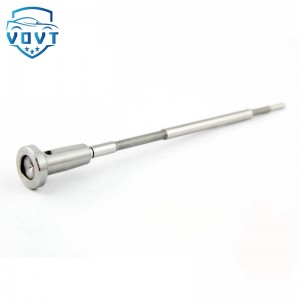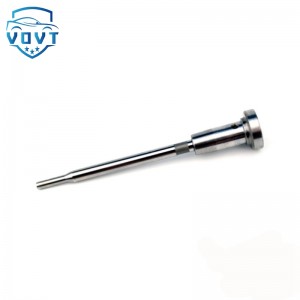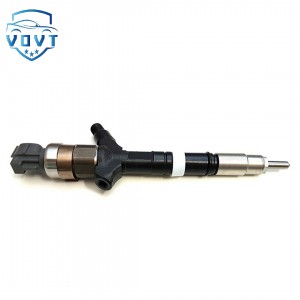Hot Sale Solenoid Valve 2145427 ELECTROVALVE for Caterpillar CAT C7 C9 Fuel Injector 10R4761 10R4762 10R4763 10R7222 10R7224
Products Description
| Reference Codes | C7 C9 |
| Application | / |
| MOQ | 6 PCS |
| Certification | ISO9001 |
| Place of Origin | China |
| Packaging | Neutral packing |
| Quality Control | 100% tested before shipment |
| Lead time | 7~15 working days |
| Payment | T/T, L/C, Paypal, Western Union, MoneyGram or as your requirement |
Introduction of injector solenoid valve
Structural features
Electromagnetic coil: usually made of high-strength enameled wire, it can generate a strong magnetic field when powered on. In order to ensure its stable performance, the electromagnetic coil will be insulated to prevent short circuit and leakage, and has good heat dissipation performance to cope with the heat generated by long-term work.
Valve core assembly: including valve core, valve seat and spring and other components. The valve core is generally made of high-hardness, wear-resistant magnetic materials, such as special alloy steel, which can move quickly and accurately under the action of the magnetic field. The valve seat is made of wear-resistant and corrosion-resistant materials, such as ceramics or hard alloys, to ensure good sealing performance and reduce fuel leakage. The spring is usually a high-strength alloy spring to provide a reset force for the valve core to ensure that the valve core can quickly return to its initial position when the power is off.
Casing: generally made of high-strength aluminum alloy or stainless steel, with good mechanical strength and corrosion resistance. The casing not only protects the internal components, but also provides a magnetic circuit loop for the electromagnetic coil to enhance the magnetic field effect.
Working principle
The injector solenoid valve works based on the principle of electromagnetic induction. When the engine control unit (ECU) sends a fuel injection signal, current passes through the electromagnetic coil to generate a magnetic field. The electromagnetic force generated by the magnetic field attracts the valve core to move upward to overcome the spring force, separate the valve core from the valve seat, open the fuel channel, and high-pressure fuel is ejected from the injector. When the ECU stops sending signals, the electromagnetic coil is de-energized, the magnetic field disappears, the spring pushes the valve core to reset, closes the fuel channel, and stops injecting fuel. By controlling the power-on time and frequency of the electromagnetic coil, the ECU can accurately control the timing, duration, and amount of fuel injection to meet the needs of different engine working conditions.
Performance parameters
Opening response time: Generally between a few milliseconds and tens of milliseconds. The fast opening response time helps to accurately control the injection time, so that the fuel can be injected into the engine combustion chamber at the best time and improve combustion efficiency.
Closing response time: Also between a few milliseconds and tens of milliseconds. The shorter closing response time can avoid excessive fuel injection, reduce fuel waste and pollutant emissions.
Working voltage: Usually 12V or 24V, matching the voltage of the vehicle's electrical system. The stability of the working voltage is crucial to the performance of the solenoid valve. Voltage fluctuations may affect the magnitude of the electromagnetic force, and thus affect the accuracy of the injection.
Working current: Depending on the specifications and performance requirements of the solenoid valve, the working current is generally between a few amperes and more than ten amperes. The current determines the strength of the electromagnetic force, which affects the movement speed of the valve core and the degree of opening of the injector.
Failure mode and impact
Coil failure: such as coil short circuit, open circuit or insulation damage. Coil short circuit will cause excessive current and may burn the ECU drive circuit; coil open circuit will prevent the solenoid valve from generating a magnetic field, the valve core from moving, and the injector from spraying fuel, resulting in the engine being unable to start or working unstably.
Valve core stuck: Due to impurities, moisture in the fuel or wear on the valve core surface, the valve core may be stuck in the valve body and unable to move normally. This will cause the injector to either always be in the open state, causing fuel leakage and engine loss of control; or always be in the closed state, causing the engine to lack cylinders and reduce power.
Loose sealing: The sealing surface between the valve seat and the valve core is worn or foreign particles are intruded, which will lead to loose sealing and fuel leakage. This will not only cause fuel waste, but also affect the accuracy of injection pressure and injection amount, reduce engine performance and exceed emission standards.























